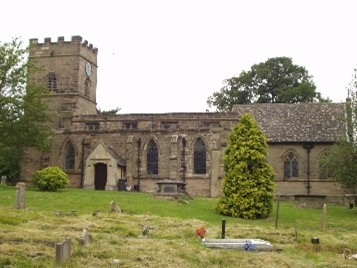
The Church, which is a Grade II* listed building, is steeped in history. The first priest is recorded in the Domesday Book in 1086 and the oldest parts of the present building are believed to date from the late eleventh century. The structure has evolved over the centuries. Extensions have been added and alterations made to adapt to the needs of the times.
In 1979 several pews at the rear of the church were removed and folding doors put in to create a space apart from the main body of the building, where meetings could be held, informal gatherings take place, and the Sunday Club be given a home.
The room served the church well but was limited in the space which it provided. In 2018 further pews were removed so that when the dividing doors were folded back the area available for use was extended. At the same time the vestry was reconfigured to provide a kitchen area and the church was re-carpeted. This alteration has created a warm and welcoming space which has substantially increased our ability to accommodate events of a social nature and more ambitious refreshments. This has resulted in a considerable increase in the numbers of people who come into the church and who forge relationships with members of the congregation and some of whom attend services from time to time. It has also had an impact on our burgeoning work with children and their parents.
Unfortunately at the moment, we are facing considerable expenses in connection with the maintenance of our church building. At the beginning of the year our regular electric check revealed that our heating system was unsafe and that our lights need replacing. We hope to have a new electric heating system installed before Christmas and are obtaining quotes at the current time for replacement lights, which will be much more energy efficient since we shall take the opprotunity of changing to LED bulbs. In addition, our church clock is currently not working. It is being restored and repainted but cannot be put back into operation until the surrounding masonry, which is crumbling, has been repaired. For this work to be done, scaffolding will be required and so we are also looking at two further projects which were already in the pipeline and to be addressed in the near future, namely repair of the louvres and of the tower roof. We are anticipating that the total bill will be substantial and we shall require a Faculty (permission) from the Diocese to proceed and will also be seeking grants to help to defray the expense.
There is a relatively extensive old churchyard which surrounds the church. Within this, adjacent to the North East wall of the church, lies our Garden of Remembrance. Then across a lane which runs alongside the boundary wall on the West side of the church lies the “new” burial ground. We maintain both areas of land with a mix of help from volunteers, a paid contractor and a contribution towards grass cutting from the Parish Council.
Installed on the North side of the church, in Summer 2025, thanks to a generous legacy, our Heritage Board provides an attractive and informative feature by the side of the public foothpath which runs through the churchyard. It depicts important elements of the church with relevant narrative and hopefully will draw people to explore further, inside the church itself.
There are Churchyard Regulations governing the right to burials and the type of memorials allowed and so contact the Team Administrator in the first place if you want to know more about these.